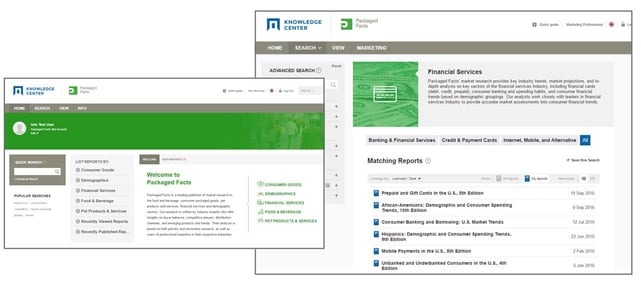In a nutshell: The COVID-19 pandemic changed the economic and financial landscape in the United States, and the credit card space has experienced challenges and rapid change as a result. According to MarketResearch.com data, issuers found themselves scrambling to incentivize cardholders to spend using co-branded cards with value propositions that became uncertain due to health concerns. They also faced new competition from buy now, pay later financing options. Many card companies were forced to restructure their programs to stay ahead of competitors. Those moves brought opportunities and risks for consumers trying to manage spending, maximize value, and make ends meet.
In 2020, the COVID-19 pandemic changed how many consumers in the United States interacted with their money. Occupancy restrictions saw many people shift to online banking and turn to online retailers for goods they previously bought in stores.
At the same time, some expenses, including airfare and lodging, saw sharp declines in demand. Cards offering rewards in those categories needed to find new ways to incentivize consumers to use those lines of credit.

That came at a time when alternative means of financing became more prevalent among consumers. Those alternative means of financing provide new ways to pay for purchases, but they also carry risks for consumers.
Elizabeth Rowe, Senior Financial Services Specialist at MarketResearch.com, has been watching these developments with interest. Thanks to her lengthy professional background and expertise in the payments space, she can provide insight into the industry and anticipate where current trends may lead for card issuers and consumers.
“In the last year, we’ve written a big report on private-label credit cards, which are of interest to big merchants and also the issuers in that space,” Elizabeth said. “Then we wrote a report on co-branded credit cards, which has become a fascinating topic in the past year.”
Based on that research, Elizabeth shared insights into the current challenges and conflicts that card issuers and users face in a rapidly changing market.
Travel Rewards Cards Struggle to Incentivize Consumers
One challenge many credit card issuers encountered during the pandemic was sustaining co-branded cards that offered travel rewards. The cessation of national and international travel posed a distinct dilemma.
“Airlines are one of the biggest segments in the co-branded credit card space, and their businesses just got hammered,” Elizabeth said. “Within that large category, the challenge became, ‘How do you create and maintain hotels?’ Also, ‘How do you create value when the core value proposition of your card has no value?’”
The tension relaxed as people began traveling and hotel and airplane occupancy rates started to rise. It appeared that cards could again rest easy with their core approach. But, of course, the emergence of COVID-19’s more contagious Delta variant threw another wrench into the financial machinery.
Those types of ups and downs in the travel industry could conceivably be the new norm. In that situation, the primary value of co-branded travel rewards cards becomes a balancing act. Companies may have a difficult time convincing consumers to continue using a card when the reward value is uncertain.
“They’re distracted by not just the core value proposition of their credit cards, but also the challenge to the core value proposition of their business,” Elizabeth said. “How do you fill plane seats? How do you staff the planes you’re flying?”
Pandemic Drove Consumers Toward BNPL Solutions
Elizabeth said that consumers were gravitating toward buy now, pay later (BNPL) options even before the pandemic. But when income became uncertain, and people started tapping their savings to meet everyday expenses, those plans allowed consumers to get what they needed and defer payments. In the meantime, they could look for work and earn enough to make payments when they came due.
“You had a sudden surge in the number of providers for BNPL,” Elizabeth said. “The credit card companies and issuers all saw that happening and began scrambling for the door to enter the BNPL market.”
The pandemic saw an influx of foreign BNPL providers enter the U.S. market, challenging domestic providers and competing with credit card issuers. Those issuers faced an additional threat as consumers were cutting spending and paying down existing card balances, including with government stimulus money.
Elizabeth reported that credit card receivables only showed renewed growth in the second quarter of 2021, and even then, the growth was anemic. Five quarters after the pandemic’s beginning, credit card issuers’ receivables had not recovered to their 2018 levels.

“You’re looking for tools that help you balance a household budget and have more control of your spending. BNPL providers say, ‘Don’t buy that for $300 on your credit card; you can pay $75 every two weeks,’” Elizabeth said. “Think about how much easier it is to manage those payments, and you don’t have to pay interest. And people moved into that.”
However, in many cases, when those payments came due, not everyone could pay them. So some people ended up paying them with credit cards anyway. That was beneficial for issuers, who make more money, but detrimental to consumers, who end up paying more in interest.
In some cases, however, people couldn’t pay at all. That left BNPL providers, especially foreign ones, in a risky position.
“They’re beginning to have levels of bad debt, uncollectible debt, in their core BNPL businesses with American consumers,” Elizabeth said. “They know their consumers in their home countries. And the fact that Americans can get in over their heads puts those businesses in positions to aggressively manage risk because of some characteristics of the market.”
Issuers Seek Innovative Ways to Encourage Credit Use
Credit card issuers were quick to respond to the BNPL demand in the American market. As soon as they saw the consumer demand, many began experimenting with similar solutions.
“Pay It Plan It from American Express is a way of getting into that BNPL space or the mindset that its cardholders may have,” Elizabeth said. “You can single out a purchase and set that up to pay it off over a brief period. It didn’t change the card or change their spend so much as it maintained the relevancy and utility of the card.”
In addition to competing with BNPL and implementing similar solutions, credit card issuers also found themselves racing to keep up with emerging trends. As spending patterns abruptly changed, companies began restructuring rewards to fit consumer needs.
Fewer people were dining out, and more were ordering takeout meals and groceries. Issuers found an obvious niche for rewards catering to that lifestyle.
“You had explosive growth in the grocery delivery business, the restaurant delivery business, so issuers added points for using those services to keep consumers using their cards and to maintain their shares of wallet,” Elizabeth said.
The credit card sector also found itself facing more aggressive competition from within. As one issuer rolls out a new reward type, its competitors are quick to jockey for position within the market.
“Well, if Chase is doing that, Citi is going to start doing that. They will match that strategy along with American Express,” Elizabeth said. “So it’s a case of looking at what consumers are spending their money on.”
Conflicts Emerge Within the Installment Finance Industry
Credit card issuers are eager to incentivize consumers to use their cards. But using those cards affects the consumer’s credit score, and the higher an individual’s utilization rises, the more their score may suffer.
“These credit card issuers are structuring things that keep them in-house so they can manage the risk profile of their own portfolios. And they’re pushing people to consume the lines of credit that are so integral to their maintaining their high credit score,” Elizabeth said. “So you have things that are working for the issuer that appear not to be working for the consumer.”
Elizabeth also noted that some consumers have grown wary of BNPL and other deferred-interest products. Missing a payment can incur harsh penalties, and once a consumer has experienced that, their attitude toward the product may prevent them from using it again.
The COVID-19 pandemic and its effects are far from over. Likewise, trends in credit and financing will continue to evolve in response to shifting consumer positions.
“I’m going to be watching what happens with the BNPL product and how the larger credit card industry is going to manage risk and have short-term installment financing without hurting their customers,” Elizabeth said.
Advertiser Disclosure
CardRates.com is a free online resource that offers valuable content and comparison services to users. To keep this resource 100% free, we receive compensation for referrals for many of the offers listed on the site. Along with key review factors, this compensation may impact how and where products appear across CardRates.com (including, for example, the order in which they appear). CardRates.com does not include the entire universe of available offers. Editorial opinions expressed on the site are strictly our own and are not provided, endorsed, or approved by advertisers.





![7 Credit Card Habits to Stay Out of Debt ([updated_month_year]) 7 Credit Card Habits to Stay Out of Debt ([updated_month_year])](https://www.cardrates.com/images/uploads/2019/04/cover-3.jpg?width=158&height=120&fit=crop)
![6 Credit Strategies to Help You Financially Prepare for the Holidays ([current_year]) 6 Credit Strategies to Help You Financially Prepare for the Holidays ([current_year])](https://www.cardrates.com/images/uploads/2019/10/Holiday-Credit-Strategies-Feat.jpg?width=158&height=120&fit=crop)


